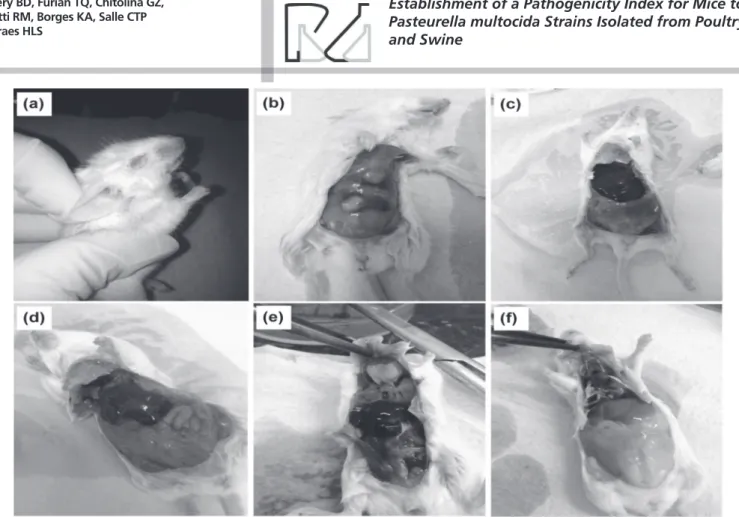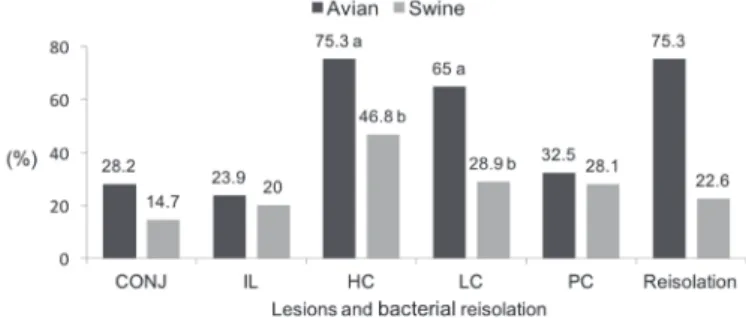Establishment of a Pathogenicity Index for Mice to Pasteurella multocida Strains Isolated from Poultry and Swine
Texto
Imagem



Documentos relacionados
jejuni strains isolated from humans and different animal species (bovines, swine, dogs, primates, wild boar and poultry) in the state of São Paulo, both by means of sequencing gene
Table 3 – Relative frequency (%) of the reisolation of inoculated Pasteurella multocida strains and the median pathogenicity index (PI) according to the strain origin.. Origin
The evaluation of the biofilm formation capacity of Pas- teurella multocida strains isolated from cases of FC and swine lung after slaughter demonstrated that the adhesion of
Molecular characterization of Pasteurella multocida isolates from swine lungs by Randomly Amplified Polymorphic DNA.. The purpose of this study was to
O tema abordado consiste na aplicação dos conceitos de qualidade e do MASP na busca de identificação das principais causas e definição de planos de ação de tratamento das
Table 1 – Mortality of Nile tilapia ( Oreochromis niloticus ) observed during 12 days after inoculation, in three periods, with different infective doses of
Establishment of a pathogenicity index in Salmonella Enteritidis and Salmonella Typhimurium strains inoculated in one-day-old broiler chicks.. [ Estabelecimento de um índice
3: mortality rate of the three strains in mice was evaluated from seven to 48 days after infection and was expressed as percent- age of dead animals, varying from a low (5 to 10%)